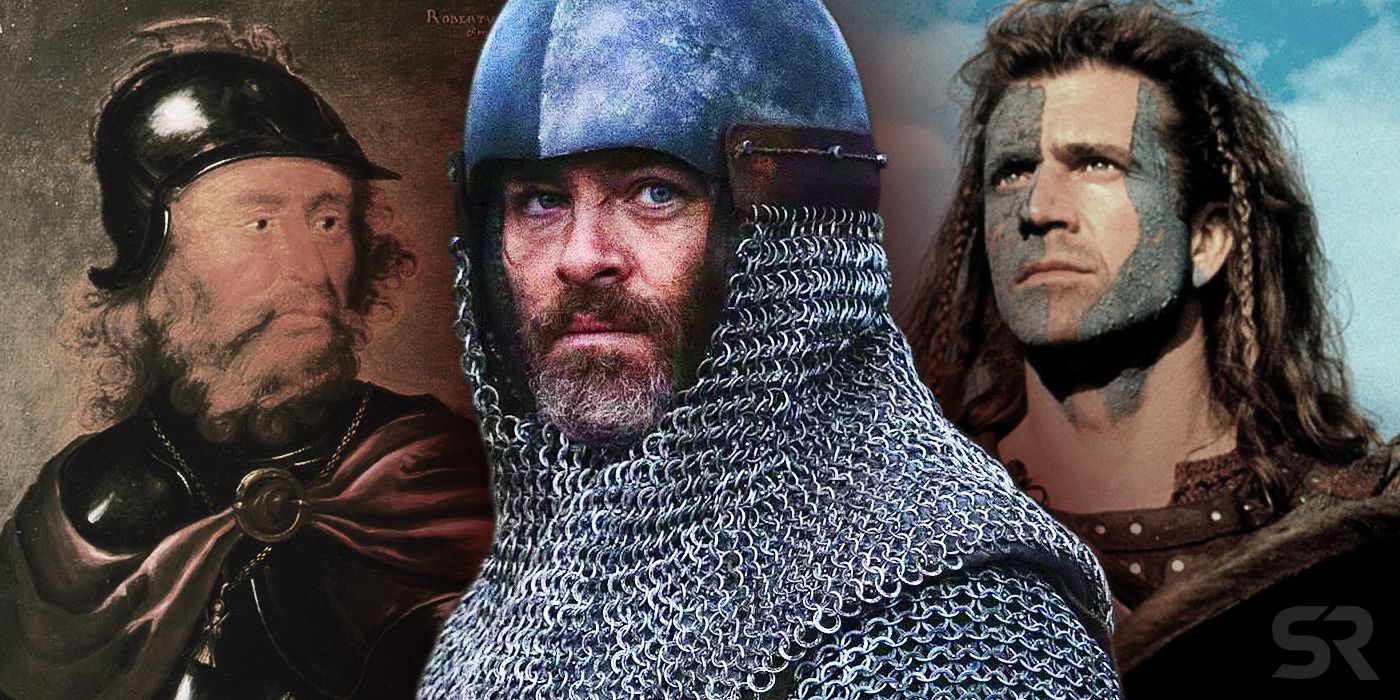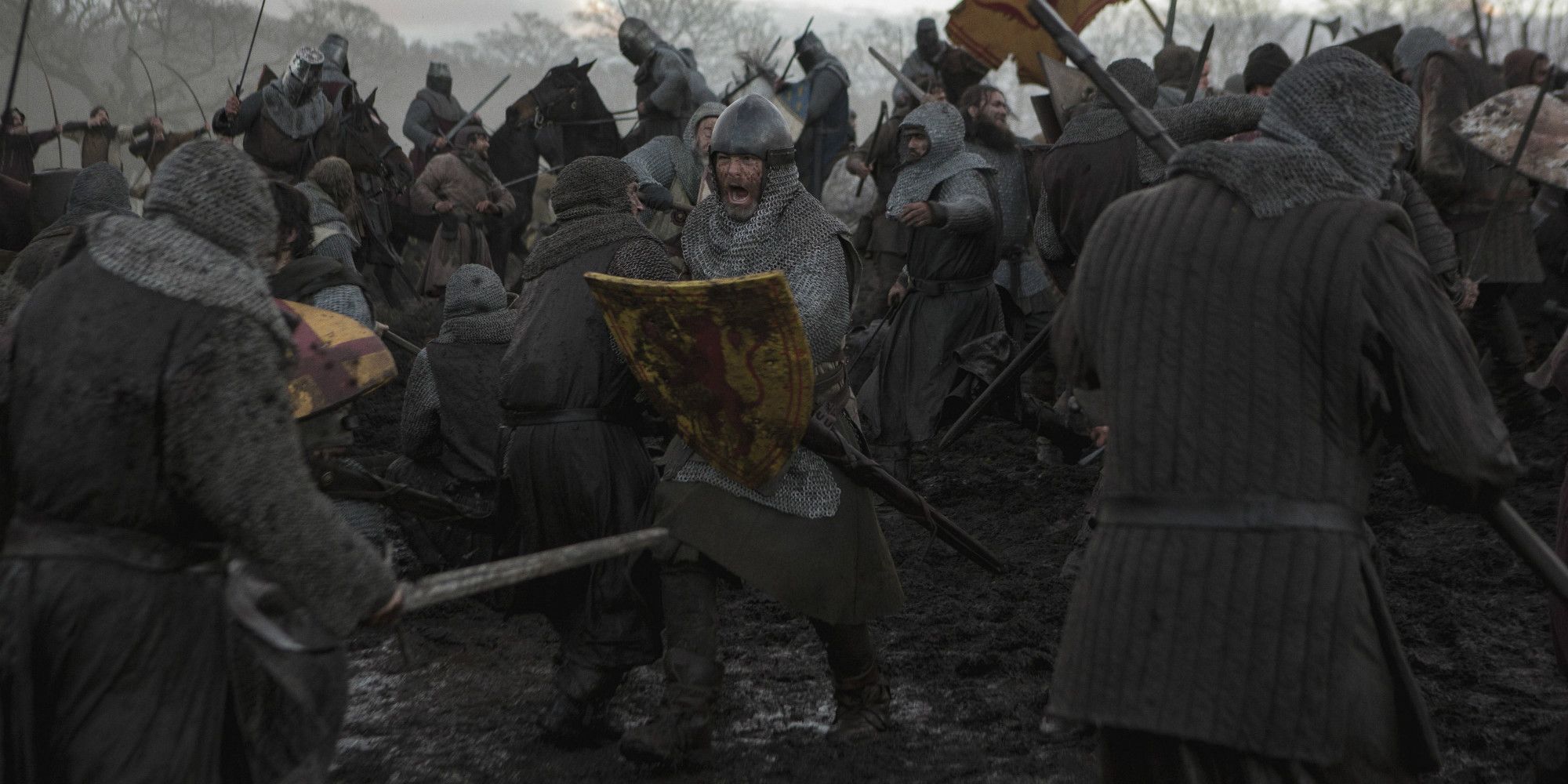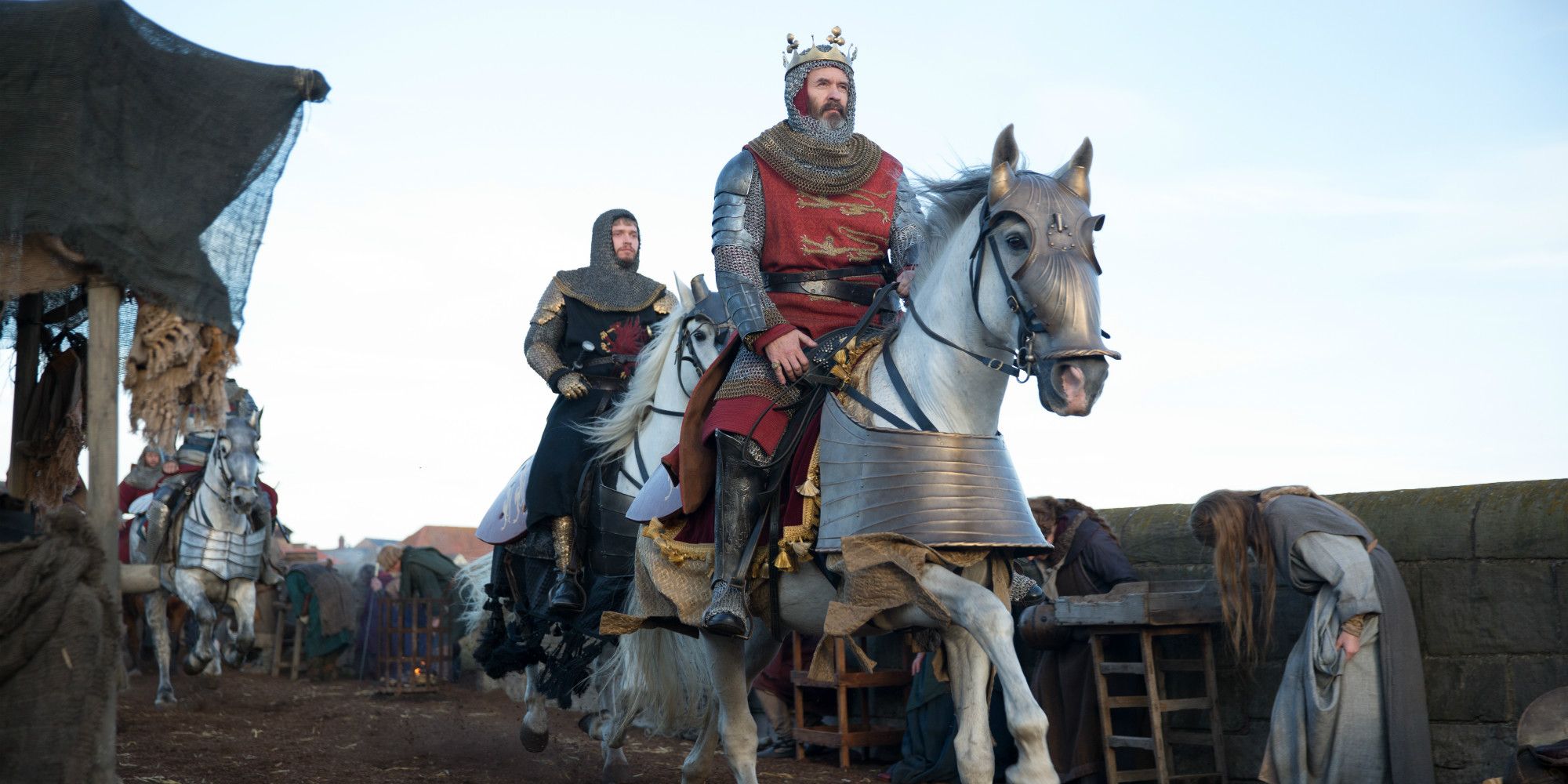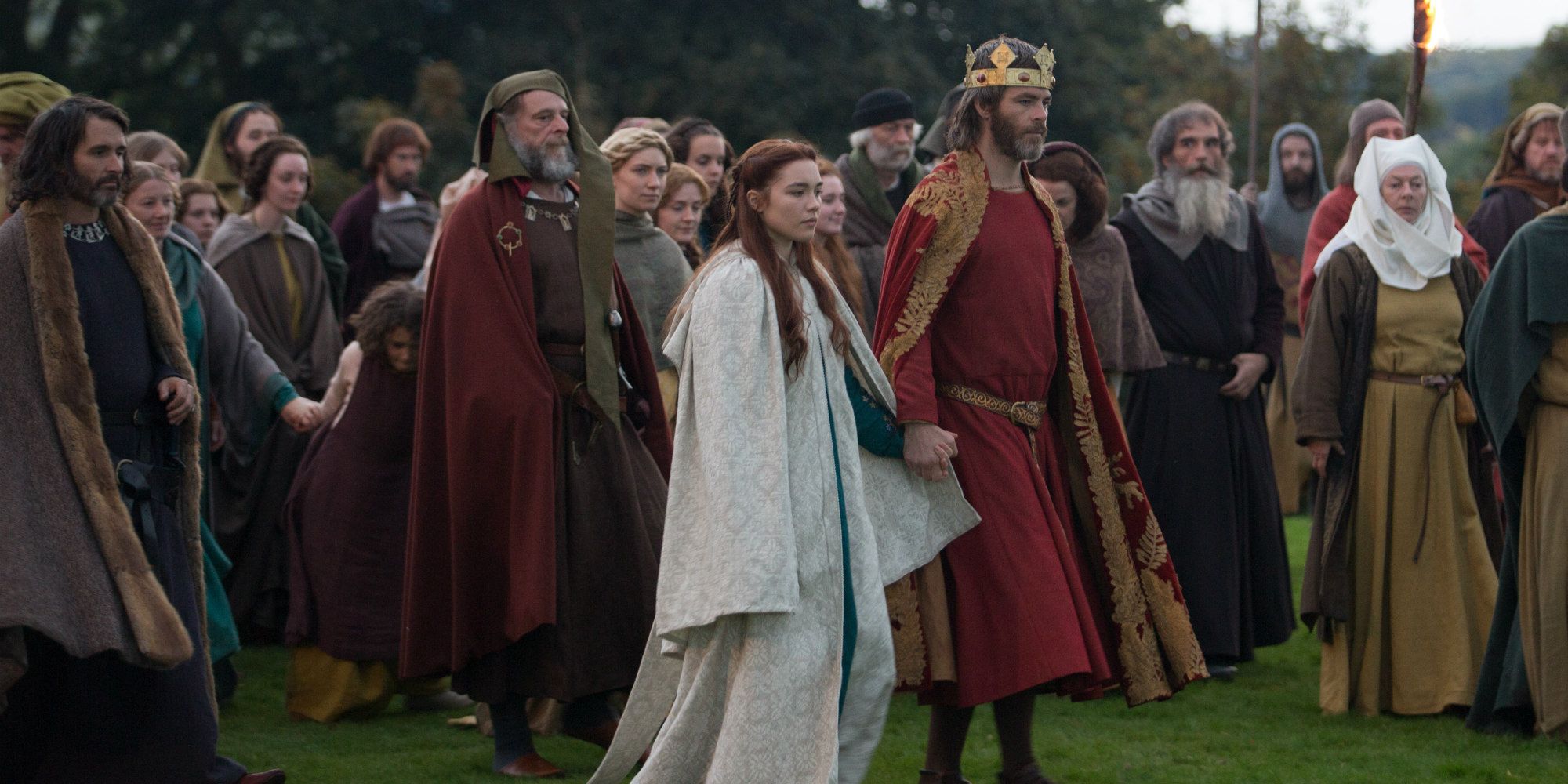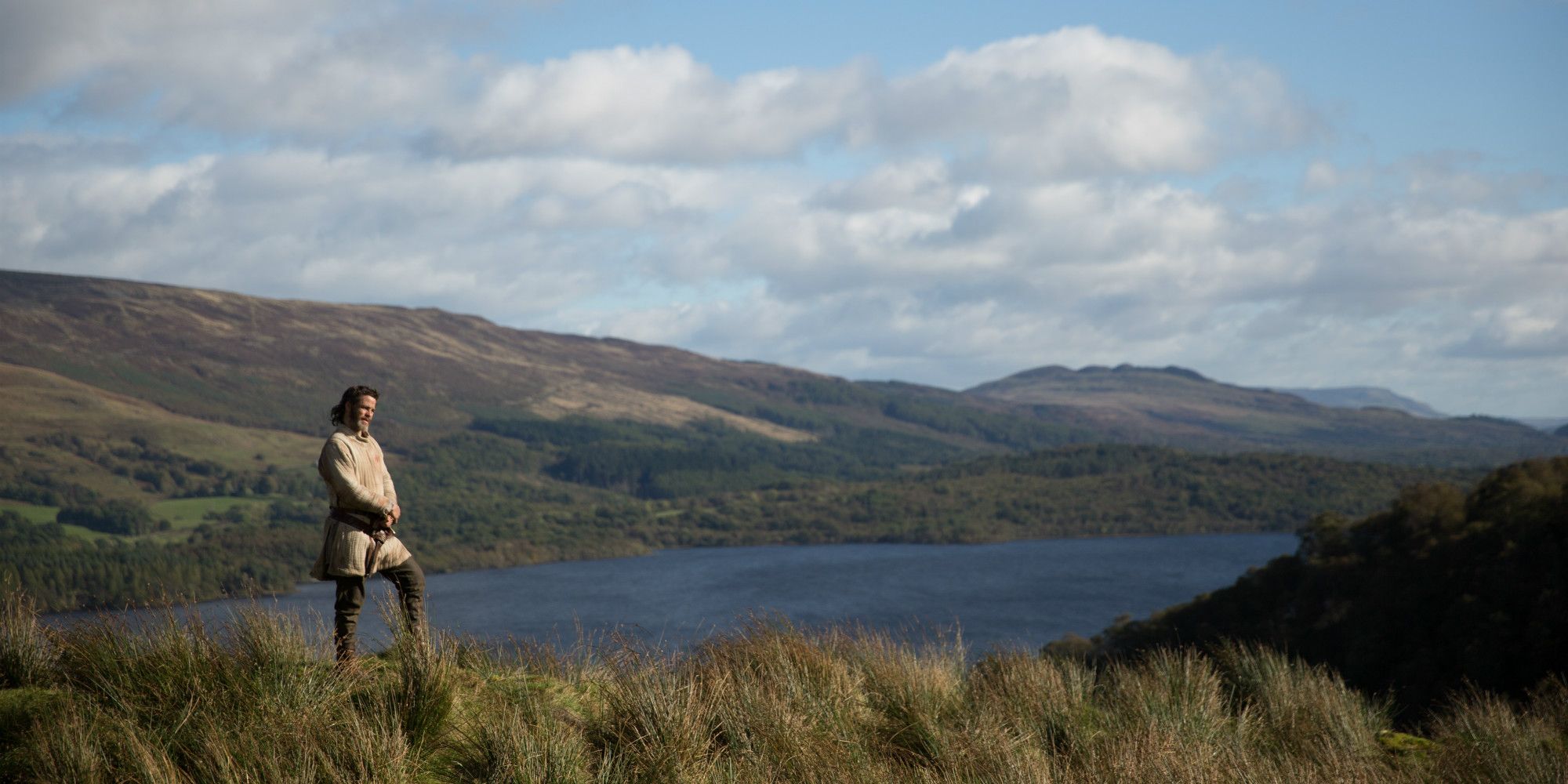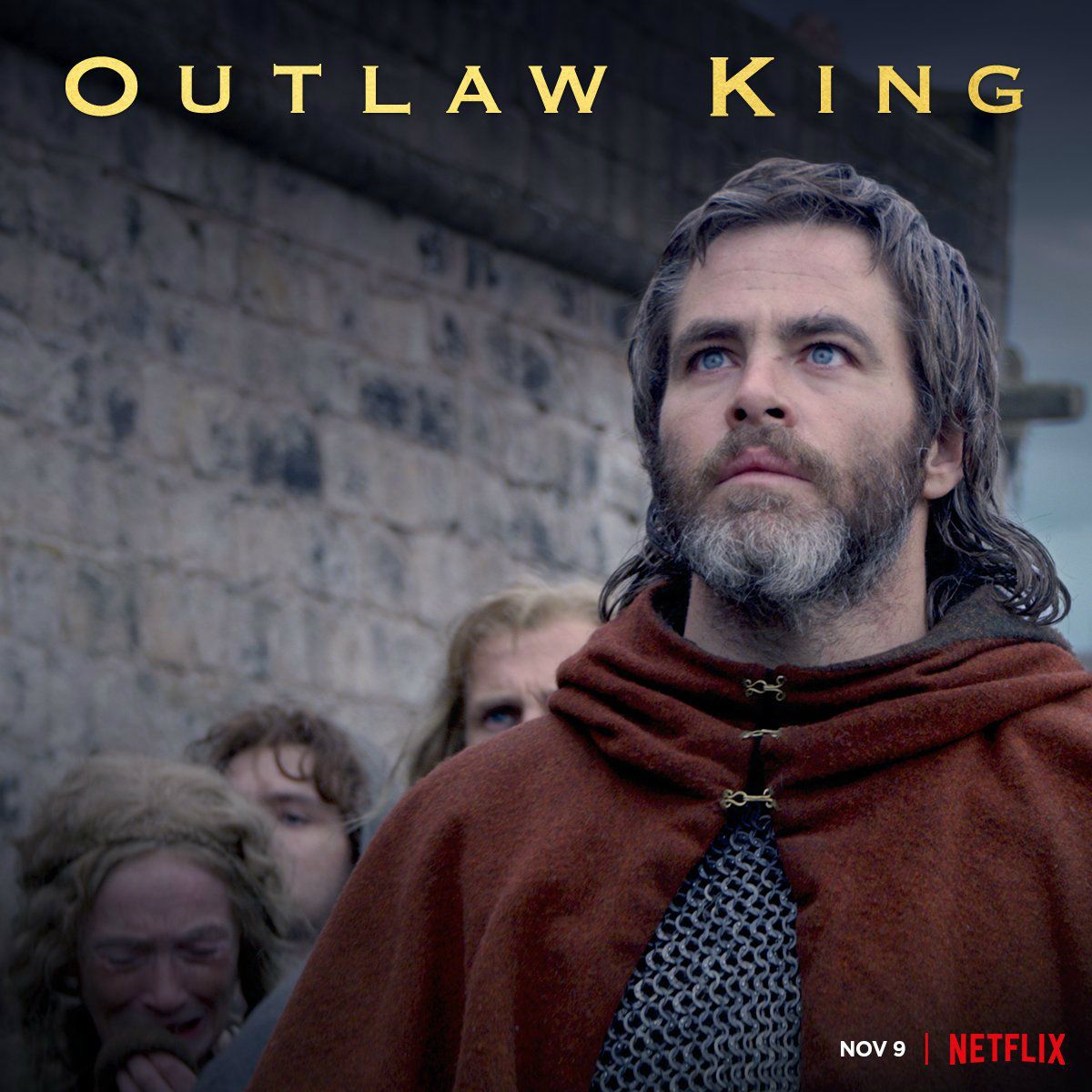Warning: SPOILERS below for Outlaw King!
Outlaw King tells the tale of how Robert the Bruce became King of Scots and fought for Scotland's independence, but the film's ending only reveals part of the true story. Directed and co-written by David Mackenzie (Hell or High Water), the historical epic stars Chris Pine as the titular warrior-king, Florence Pugh (Malevolent) as his wife Elizabeth, and Stephen Dillane (Game of Thrones) as King Edward I of England.
Set in the years 1304-1307, Outlaw King begins with Scotland's capitulation to King Edward and the forging of a peace treaty that restored the Scottish nobles' lands and titles. However, William Wallace, "the last rebel standing", is in hiding and the Guardian of Scotland remains a hero to the people. The film depicts Robert being given Elizabeth de Burgh as his wife by Edward (who gave favor to the Bruces), and Elizabeth loyally stands by her husband when he decides to assert his claim to Scotland's throne after Wallace is captured and executed - which includes Robert murdering John Comyn (Callan Mulvey), who also has a claim as King of Scotland and threatened to reveal Robert's plans to Edward.
Related: Screen Rant's Outlaw King Review
From there, Outlaw King shows how Robert the Bruce was crowned King of Scots and his attempts to rally the country to once more fight for their independence, which tragically cost the lives of some of Robert's brothers and saw Elizabeth and his young daughter Marjorie captured and imprisoned in England. Outlaw King climaxes with Robert leading a small band of Scotland's forces against the superior English army at the Battle of Loudoun Hill, but ultimately, the true story is even more interesting than what's depicted in the film.
- This Page: Outlaw King's Ending and Connection to Braveheart
- Page 2: What Outlaw King Changes About Its Ending and Scotland's Independence
What Happened in Outlaw King's Ending?
Outlaw King concludes with the Battle of Loudoun Hill in 1307. After suffering huge defeats and tragic personal losses, Robert the Bruce gathers his forces still loyal to the outlaw King of Scots. They face the English army led by Robert's two primary rivals, Edward, Prince of Wales (Billy Howle) and Aymer de Valance (Sam Spruell). One bit of fortune for Robert is that King Edward I died en route to the battle, leaving the weaker Prince of Wales at the head of the army.
Despite being outnumbered 3000 to 600, Robert concocted an ingenious strategy to use the land itself as part of their defense. The Scots dug trenches in the bogs and planted spears to injure the horses of the English cavalry; the tactic worked and the Scots forced the English to retreat after a brutal and bloody battle. The Prince of Wales confronted Robert in a duel (echoing the one they had at the start of the film) but was handily defeated and fled in a frightened panic, cementing the Scottish triumph and marking the turning point in the War for Scottish Independence. The film ends on this high note; Elizabeth being freed from captivity and reuniting with Robert as King and Queen of Scotland.
How Outlaw King Connects To William Wallace & Braveheart
Outlaw King mostly takes place after the events of Braveheart, though the opening sequence where Robert and the Scottish lords swear fealty to King Edward I ("King Longshanks", as he's referred to in Mel Gibson's film) happens after the pivotal Battle of Falkirk where William Wallace was defeated and goes into hiding. As depicted in Braveheart's ending, Wallace is captured, tortured, hanged, drawn and quartered (which happens off-screen in Outlaw King). Wallace's head is placed on a pike at London Bridge and the rest of his appendages were displayed across Scotland.
Related: Outlaw King: Chris Pine's Nude Scene - When It Is & Is It Worth It?
In Outlaw King, it's the news of Wallace's death that sparks new unrest among the Scottish people, threatening the peace treaty of 1304 that opened the movie, and prompting Robert the Bruce's ambition to press his claim as King and unite Scotland. As for Braveheart, the line in Mel Gibson's closing narration about how Scotland prevailed over England - "They fought like warrior poets... and won their freedom" - is what Outlaw King is depicting, although the real-life events that led to Scotland's independence weren't quite as rosy and romantic.
Page 2 of 2: What Outlaw King Changes About Its Ending and Scotland's Independence
What Really Happened In Outlaw King's Final Battle?
While Outlaw King's ending is mostly historically accurate, the story varies slightly. Robert the Bruce's Scottish forces did triumph against the superior numbers of the English army at the real-life Battle of Loudoun Hill in 1307; following a victory against Aymer de Valance a month prior at the Battle of Glen Trool, Robert and Valance faced off again at Loudoun Hill, and the Bruce did successfully utilize the guerrilla warfare strategy of digging trenches in the bog to injure the English horses with spears.
However, there was no mano e mano duel between Robert the Bruce and the Prince of Wales to conclude the real-life battle with Edward's humiliation - that was a concoction of Outlaw King to pay off the rivalry between the two characters.
What Happened To Robert The Bruce And Scotland After Outlaw King?
Outlaw King's end text admits that Battle of Loudoun Hill was only "a turning point" in the eventual Scottish victory for their independence. The more pivotal event was the Battle of Bannockburn in 1314. In 1313, Robert demanded that all remaining supporters of John Balliol, whose family also had claim to the throne of Scotland, acknowledge the Bruce's kingship and forfeit their lands and estates. Robert also demanded the surrender of the English garrison stationed at Stirling Castle - this prompted the former Prince of Wales, now crowned King Edward II, to retaliate with the largest invading army ever to invade Scotland.
Related: 15 Netflix Movies and TV Shows You Didn't Know Were Coming In November
Despite the 6000-strong Scottish army outnumbered by 2000 English cavalry and 25,000 infantry, the Scots had successfully waged guerrilla warfare on their land for years and knew how to repel the English. The bloody multi-day conflict saw the Scots again defeat the English, resulting in the deaths of thousands of English soldiers, and forcing Edward II to retreat in humiliation. The King of England was pursued by James "The Black" Douglas (played by Aaron Taylor-Johnson in Outlaw King) to Dunbar, but Edward was able to flee to the safety of England by ship. Had Scotland captured Edward, they could have forced instant English recognition of Scottish demands.
Nevertheless, Bannockburn was a resounding victory for Robert the Bruce that politically consolidated his claim as King of Scots. It was only at this point that a prisoner exchange for captive English nobles forced Edward II to release Robert's wife Elizabeth and his daughter Marjorie, who had been England's prisoners since 1306; Robert and Elizabeth's reunion is the final scene of Outlaw King.
How Scotland Became Part of the United Kingdom
In reality, the First War of Scottish Independence ended not on a battlefield but at the negotiating table 21 years after Outlaw King's conclusion. In 1328, Robert the Bruce was 54 years old and though he was dying, the King of Scots had outlasted both Edward I and Edward II (who was killed by his own nobles). It was King Edward III who finally agreed to Scotland's terms after Bruce sent James Douglas to attack the north of England. Fearing that the Scots would take Northumbria, the English pressed for peace terms.
The Treaty of Edinburgh-Northampton was signed in March 1328. After over 20 years of war, the English finally recognized King Robert I and acknowledged the independence of Scotland. Robert the Bruce died on June 7, 1329, and he went to his grave knowing he had achieved the peace and freedom for Scotland he had fought most of his life for - at least temporarily.
Although Robert's dying wish was for James Douglas to bring his heart on a pilgrimage to the Holy Land, Douglas was killed in Spain en route and Robert's heart never made it. Eventually, Robert's heart was interred in Melrose Abbey while the rest of the Outlaw King's remains were laid to rest at the mausoleum at Dunfermline Abbey.
Next: What's Next In Netflix's Future?
Outlaw King is available to stream on Netflix.

